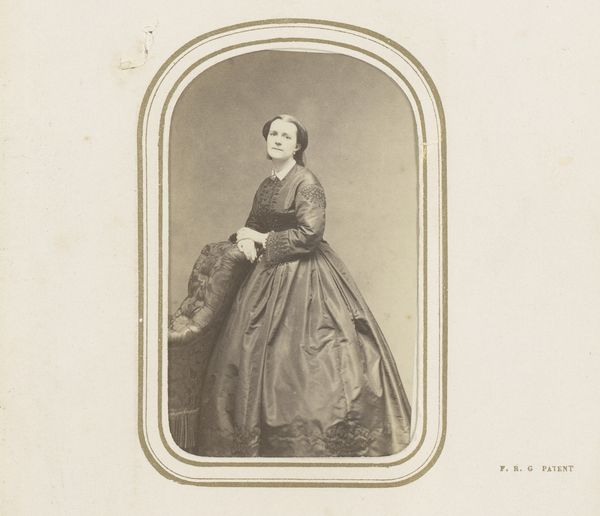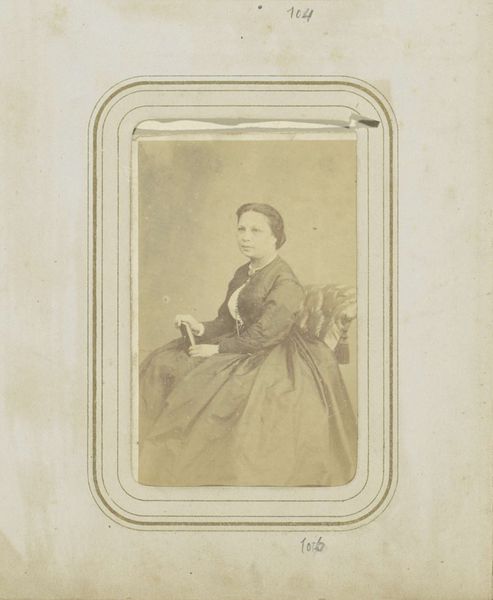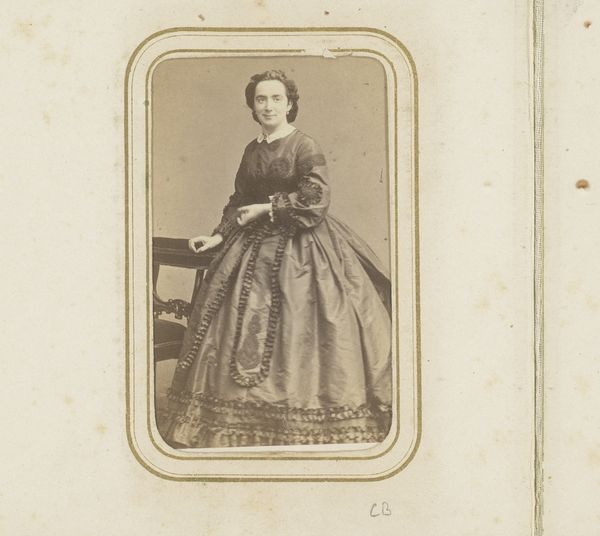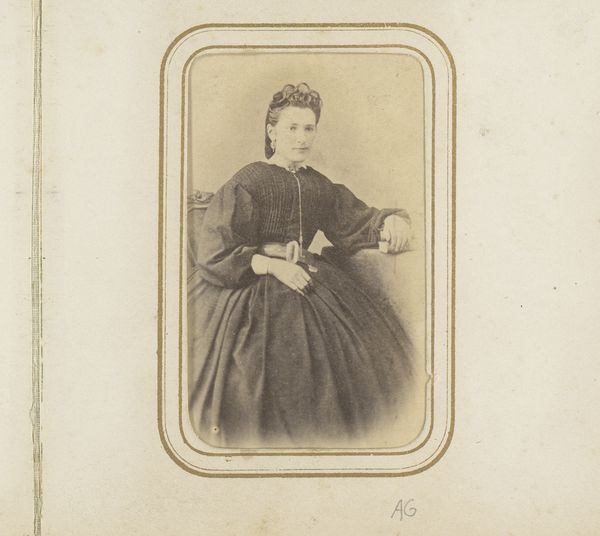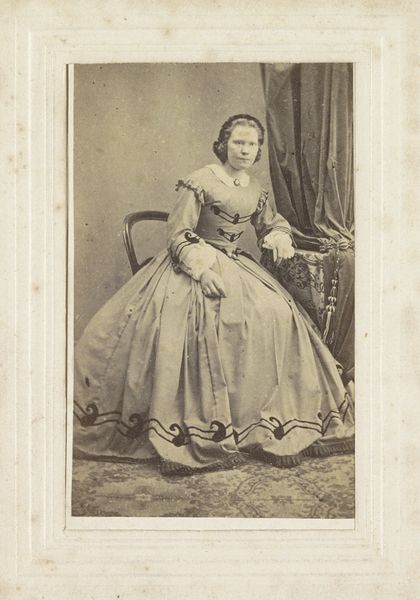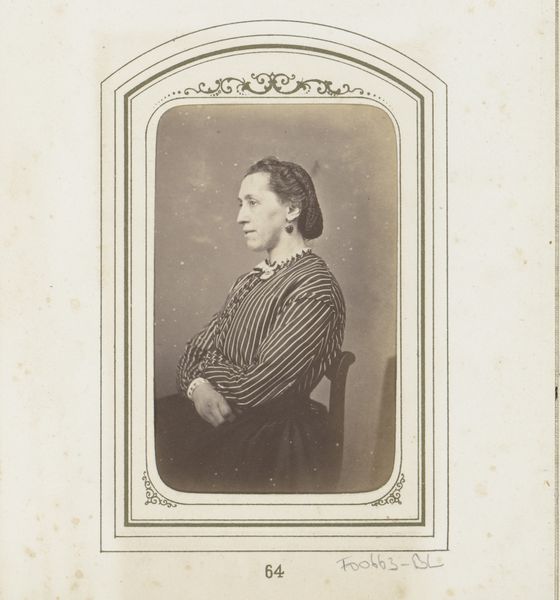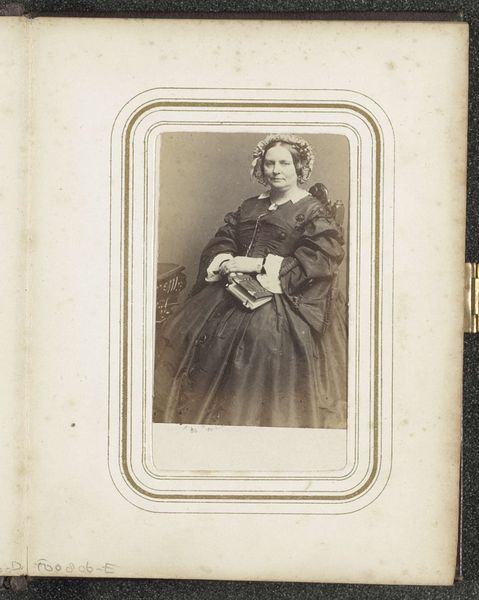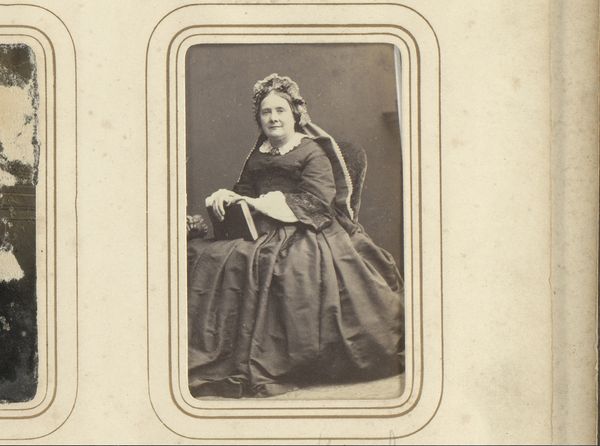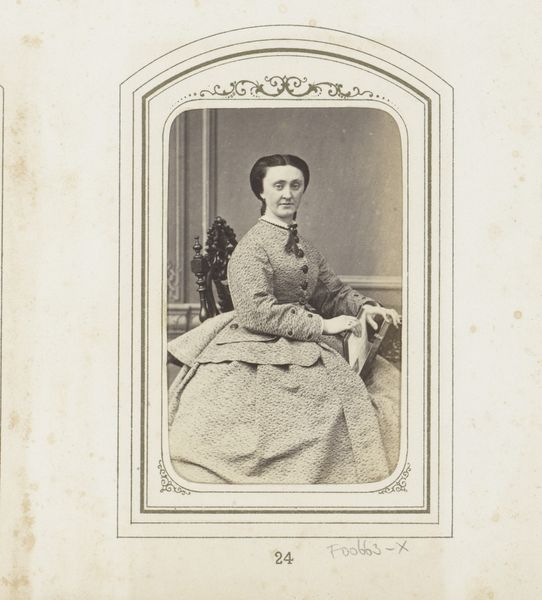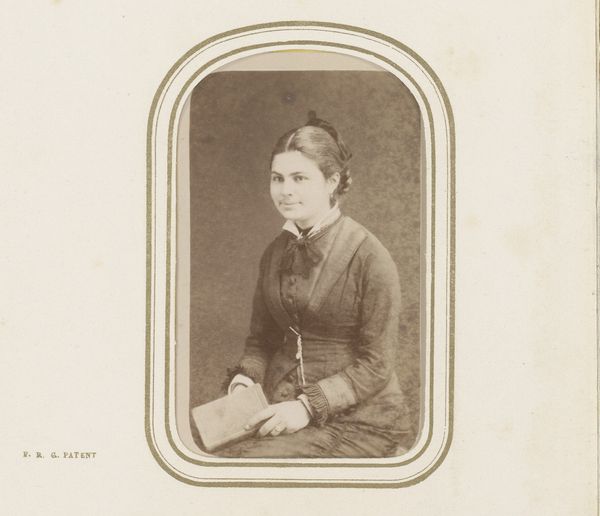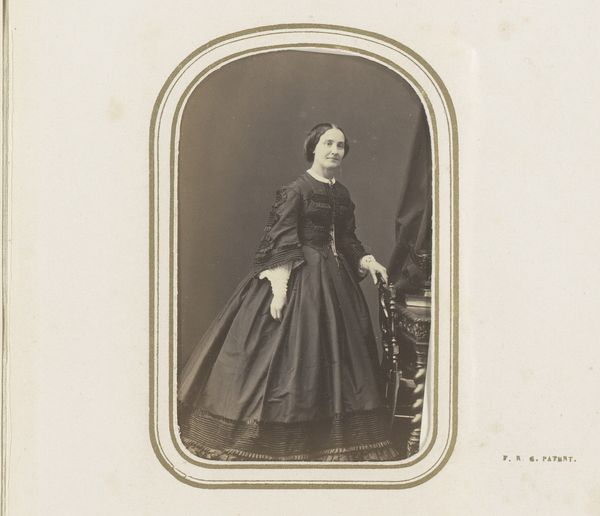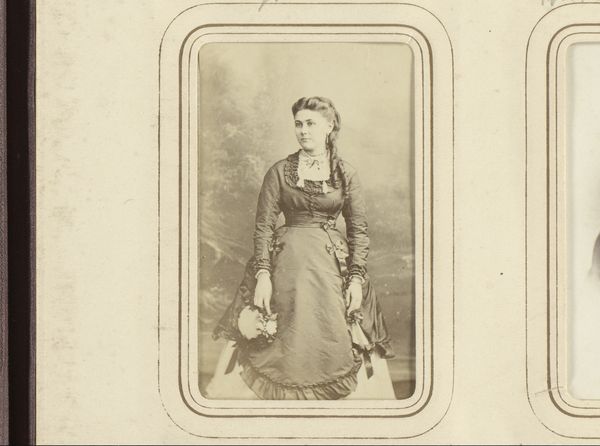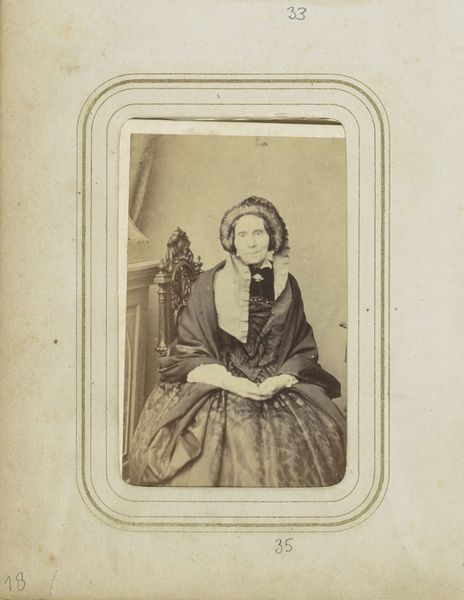
Portret van een vrouw in een rok en een gestreepte blouse c. 1857 - 1880
0:00
0:00
woodburypage
Rijksmuseum
paper, photography, gelatin-silver-print
#
portrait
#
figuration
#
paper
#
photography
#
historical photography
#
historical fashion
#
gelatin-silver-print
Dimensions: height 94 mm, width 60 mm, height 101 mm, width 62 mm
Copyright: Rijks Museum: Open Domain
Curator: Here we have a gelatin-silver print dating roughly from 1857 to 1880, "Portret van een vrouw in een rok en een gestreepte blouse," made by Woodbury & Page. It resides here at the Rijksmuseum. Editor: I find it wonderfully melancholic. She seems so poised, almost stoic, yet there’s something terribly sad in her eyes. A beautiful ghost trapped in a striped blouse and that ornate skirt. Curator: Consider the labor involved. Each gelatin-silver print was produced through meticulous darkroom processes, demanding both chemical expertise and careful craftsmanship, the final product meant for mass consumption. These portraits were markers of middle-class status, part of the era’s visual vocabulary. Editor: I’m drawn to that very visible chain, draped like an anchor, from her neck down to her clasped hands. Does it symbolize something? Constraint? Connection? Or just plain fashion? And those stripes! A stark contrast to the baroque swirl of the skirt, which I'm assuming was some nice imported textile. Curator: Exactly. The photograph's material reality, its paper and silver, point to the burgeoning industries that facilitated photography's popularization. Look closely at the textures; her clothing reveals economic and social narratives, reflecting Victorian-era trade routes and textile manufacturing, things which are deeply imbedded in social class structures of that time. Editor: But more than just socioeconomic analysis, I want to reach into that moment—touch the cold silver and breathe the same air. To imagine the woman behind that placid face, perhaps yearning for something just beyond the lens, outside those rigid stripes, some unspoken freedom… a trip to a flower market, who knows what. Curator: While dreams may tug, the power here lies in how it makes tangible, at an affordable cost, the aspirations and appearances of that time’s population. These images democratized portraiture, allowing many to document and cement their place within social circles. The industrial reproduction creates the personal representation, accessible and shareable. Editor: So while you see social structure, I see longing. Both the subject's, of course, but also, perhaps, mine, across all the chasms of time. An unexpected melancholy mirrored, mediated, by mass-produced silver and light. Curator: A beautiful point to conclude this conversation about this image, how the layers of context enrich this seemingly quiet photograph.
Comments
No comments
Be the first to comment and join the conversation on the ultimate creative platform.
